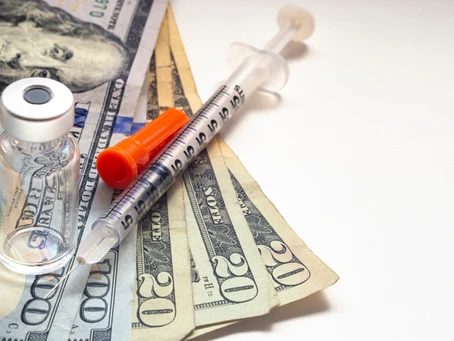One in ten people in the United States has diabetes. $1 in $4 of US healthcare costs is spent caring for people with diabetes, resulting in a 26% increase in the cost of diagnosed diabetes from $245 billion in 2012 to $327 billion in 2017. Hospital inpatient care, the prescription treatment for complications, anti-diabetic agents and supplies, and physician visits contribute to the total costs of diabetes.
The influx of diabetes diagnoses and treatment directly affects people and employers, as they grapple with rising prices and limited options.
“Diabetes is one of the top ten health conditions in the United States,” Dr. David Merritt, PharmD, RPh, Chief Pharmacist at Prescription Care Management, explains. “Additionally, prediabetes is rapidly increasing in adults and children due to a western diet and decreased physical activity. As new treatments emerge in the marketplace, costs of diabetic care will continue to rise.”
Patients with diabetes incur $16,752 in average medical expenditures per year. Roughly 2.3 times higher than patients without diabetes. Out-of-pocket costs are even higher for those patients without access to low-cost prescription alternatives.
A recent study shows that patients with Type 2 diabetes and access to only high-cost treatments are 21% less likely to fill their diabetes medication, resulting in increased complications. Patients given a formulary that included low-cost treatment options, experienced a 32% drop in out-of-pocket costs, oral antidiabetic use rose modestly, and acute complications declined by 14%.
Supporting employees with diabetes has become a focus for many plan sponsors as they battle the indirect costs of diabetes treatment, including:
-
Increased absenteeism ($3.3 billion)
-
Reduced productivity while at work ($26.9)
-
Inability to work as a result of diabetes-related disability ($37.5 billion)
Building medical and pharmacy benefits programs with high-level diabetes prevention and treatment options boost productivity and support better clinical outcomes for employees. By building a better healthcare program, employers will benefit with healthier employees (decreasing medical expenses and absenteeism) and increasing profits.
Stakeholders from across industry and public spectrums are working to lower treatment costs. At least one private insurer is now offering zero-cost insulin for participants on specific plans, and California’s governor has pledged state funds to manufacture low-cost insulin. However, self-insured employers still need immediate, viable options for lowering diabetes costs.
Identifying and covering therapeutic alternatives to high-cost prescription drugs is key to a diabetic-friendly pharmacy program. Plan partners are making this process easier. Pharmacy data analytics is helping plan sponsors not only build formularies that include lower-cost drugs but change networks to include lower-cost pharmacies and providers who focus on balancing costs with clinical outcomes.
Prescription Care Management is one of those partners.
Dr. Merritt explains, “PCM works with employer groups to offer alternatives helping to control rising health care costs. PCM offers alternatives to stem the cost of diabetic medications through therapeutic alternatives, alternate funding, and international opportunities.”
Diabetes prevention and treatment will continue to significantly impact both employees and plan sponsors. Implementing long-term, budget-friendly solutions that improve patient health is crucial to containing costs and improving health benefits.
—
Crafting a benefits strategy that balances cost and clinical outcomes is complex. Prescription Care Management (PCM) does the work for you. To see how PCM is helping employees switch from high-cost to low-cost drugs with our Pharmacy Savings Program, click here.

